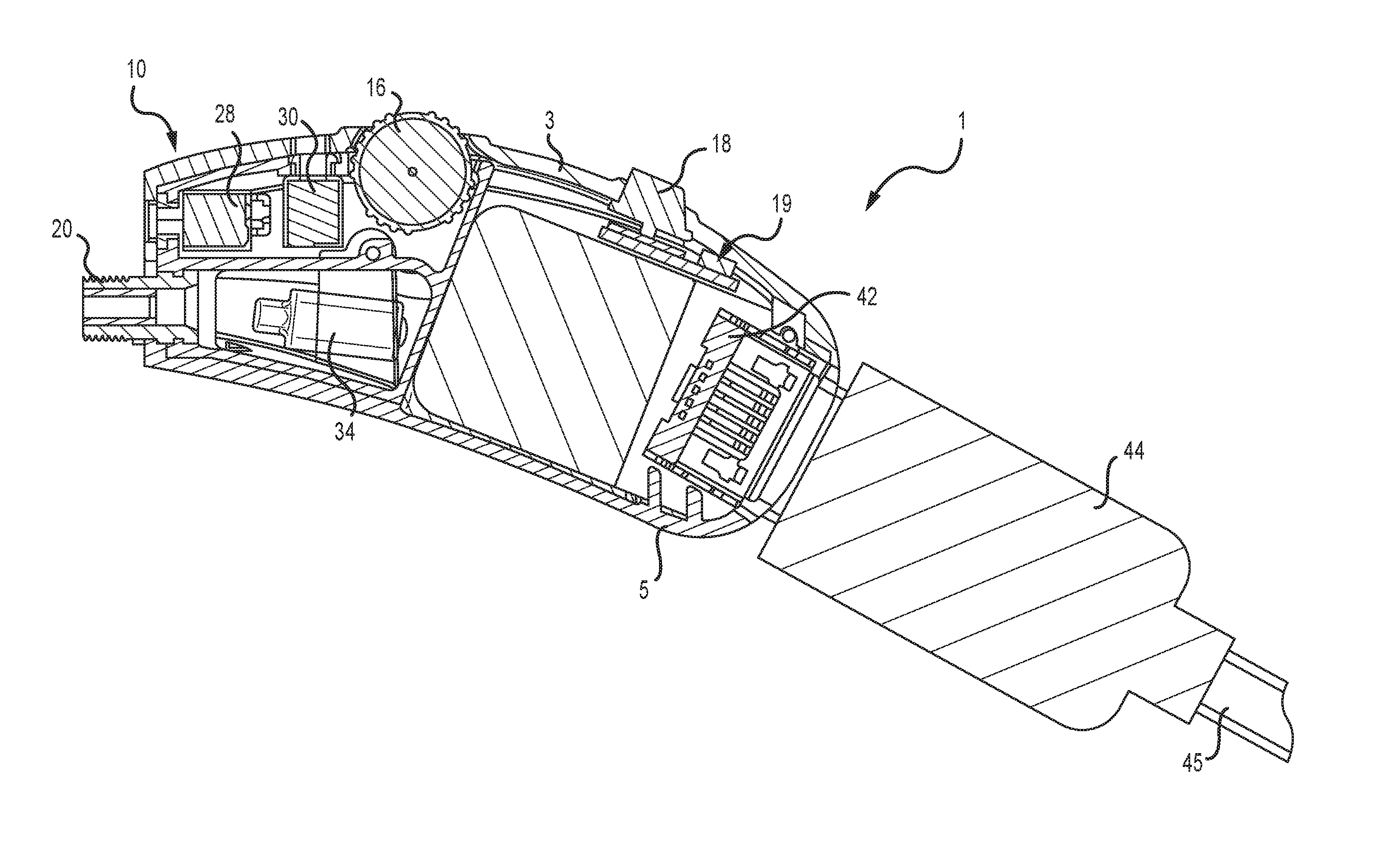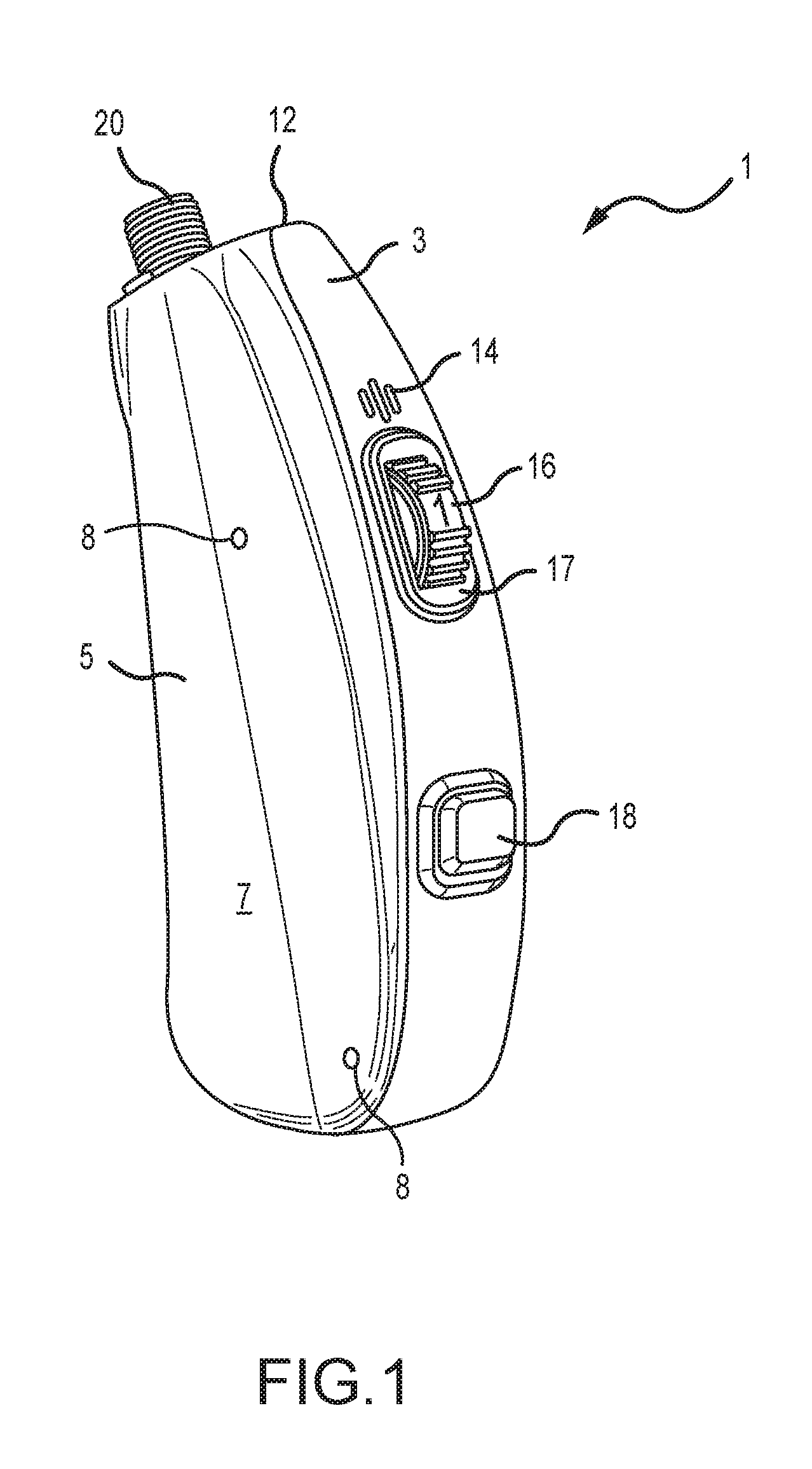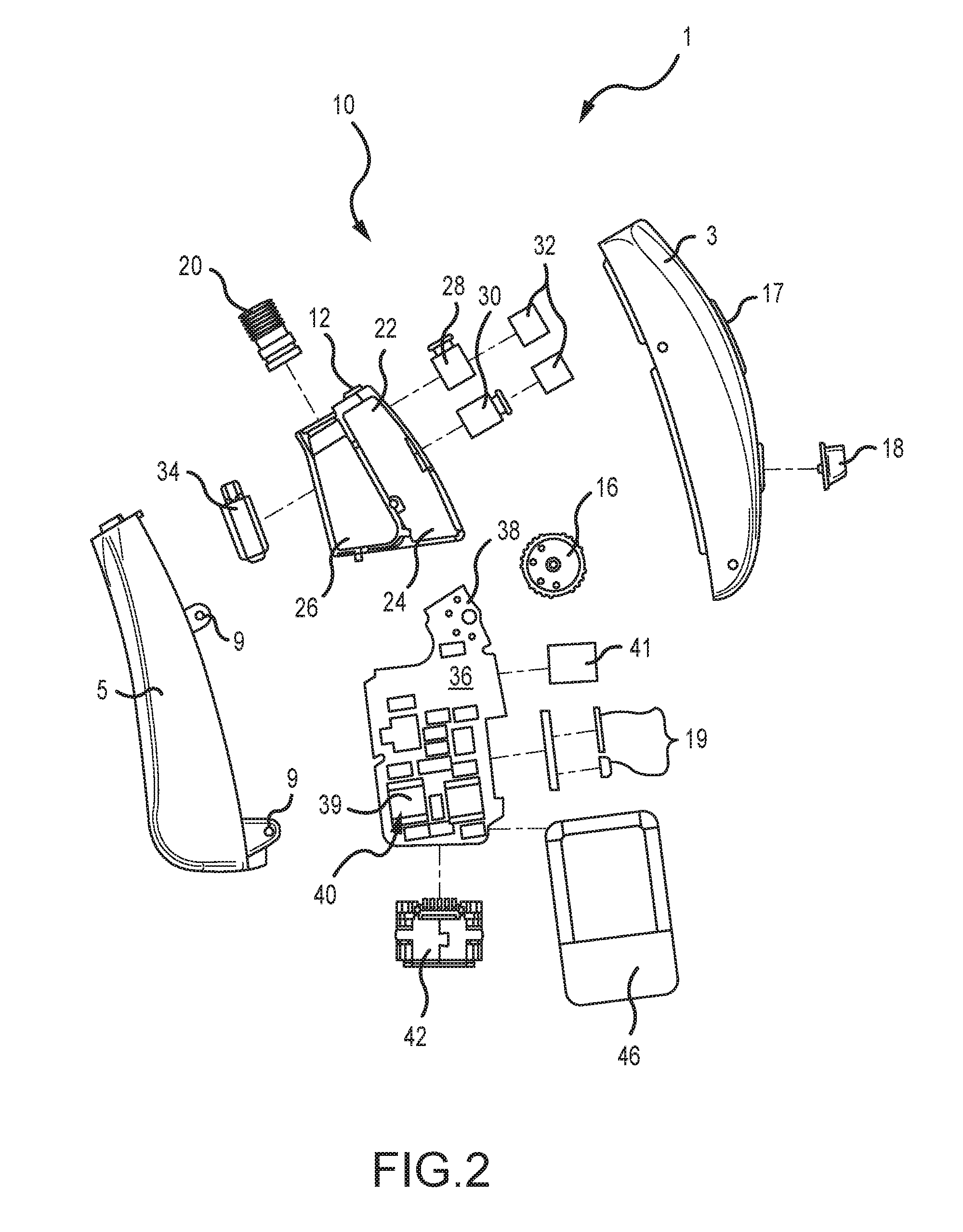Rechargeable hearing aid and charging system therefor
a hearing aid and charging system technology, applied in the direction of battery overheating protection, safety/protection circuit, transportation and packaging, etc., can solve the problems of hearing aid battery life not easily predictable, difficult, if not impossible, and difficult to handle a small object of hearing aid battery size, so as to prevent overheating and overcharging of the battery. , the effect of short recharging tim
- Summary
- Abstract
- Description
- Claims
- Application Information
AI Technical Summary
Benefits of technology
Problems solved by technology
Method used
Image
Examples
Embodiment Construction
[0027]It should be noted that the present description is by way of illustration only, and that the concepts and examples presented herein are not limited to use or application with any single rechargeable hearing aid and recharging system. Hence, while the details of the rechargeable hearing aid and the recharging system and its components described herein are for the convenience of illustration and explanation with respect to the exemplary embodiments, the principles disclosed may be applied to other types of hearing aids and recharging systems without departing from the scope of the present invention.
[0028]Referring now to FIG. 1, a rechargeable hearing aid in accordance with an embodiment of the instant invention is shown generally at 1. The hearing aid includes a first housing or upper case cover 3, a second housing or lower case cover 5, the first and second case covers being structured and arranged to operatively engage one another to form an enclosure 7 to protect the interna...
PUM
 Login to View More
Login to View More Abstract
Description
Claims
Application Information
 Login to View More
Login to View More - R&D
- Intellectual Property
- Life Sciences
- Materials
- Tech Scout
- Unparalleled Data Quality
- Higher Quality Content
- 60% Fewer Hallucinations
Browse by: Latest US Patents, China's latest patents, Technical Efficacy Thesaurus, Application Domain, Technology Topic, Popular Technical Reports.
© 2025 PatSnap. All rights reserved.Legal|Privacy policy|Modern Slavery Act Transparency Statement|Sitemap|About US| Contact US: help@patsnap.com



